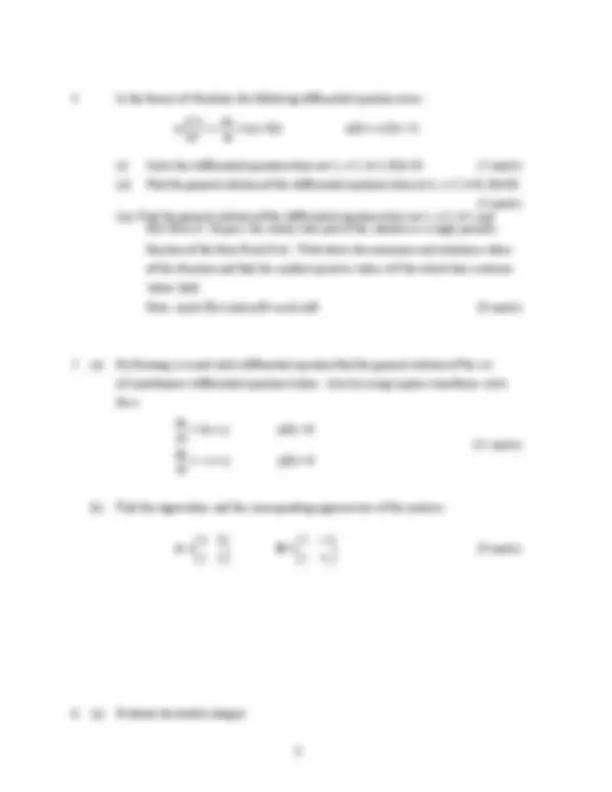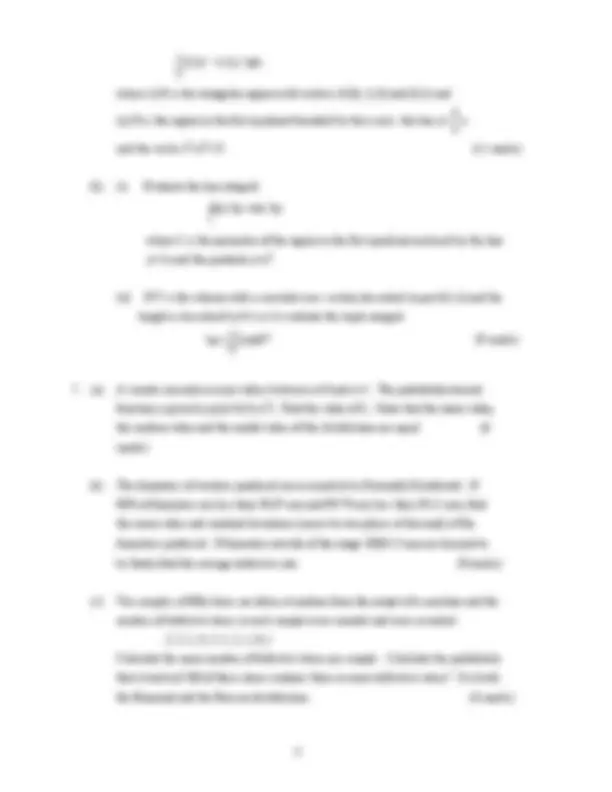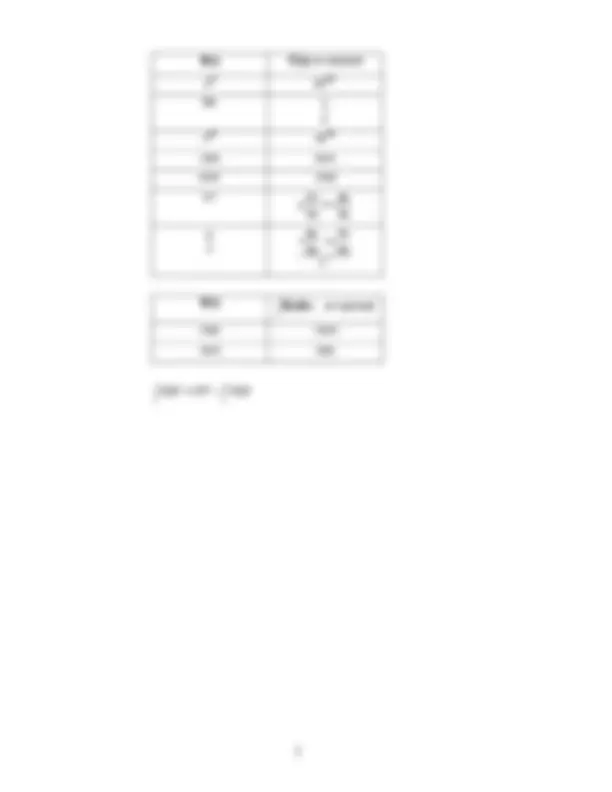





Study with the several resources on Docsity

Earn points by helping other students or get them with a premium plan


Prepare for your exams
Study with the several resources on Docsity

Earn points to download
Earn points by helping other students or get them with a premium plan
Community
Ask the community for help and clear up your study doubts
Discover the best universities in your country according to Docsity users
Free resources
Download our free guides on studying techniques, anxiety management strategies, and thesis advice from Docsity tutors
The instructions and questions for a bachelor of engineering (honours) in mechanical engineering exam held in summer 2005. The exam covers various topics in mathematics, including differential equations, calculus, and laplace transforms. Students are required to answer five questions within a 3-hour time frame.
Typology: Exams
1 / 6

This page cannot be seen from the preview
Don't miss anything!




(NFQ – Level 8)
Answer FIVE questions. All questions carry equal marks.
Examiners: Mr. J. E. Hegarty Prof. J. Monaghan Mr. T. O. Leary
dxdy^ +^ 2y=4e−2x^ y(0)=^6. (i) Find the maximum/minimum value of the solution. (ii) Using the Three term Taylor Method or the Improved Euler Method with a step of 0.1 estimate the value of y at x=0.1. Find the error in this approximation. (13 marks)
(b) In constructing a closed rectangular tank it costs €12m-2^ to construct the base and €4m- to construct all other sides. Find the dimensions of the tank of maximum volume that can be constructed for €48. You are required to use a Lagrangian Multiplier. No marks will be awarded if any other method is used in answering this question. ( marks)
3x u = 4y v= 4x 2 − y^2.
Find the partial derivatives of u and v with respect to x and y. (i) Estimate the value of v if the values of x and y were estimated to be 5±0. and 6±0.04, respectively. (ii) If P=f(u) is an arbitrary function in u show that x (^) ∂∂xP+y∂∂yP= 0
(iii) If T is an arbitrary function in u and v write down the relationships between the partial derivatives of T with respect to x and y and those with respect to u and v. Show that (^) x (^) ∂∂T^ x+y∂∂Ty=v∂∂Tv (8 marks)
s 4s 20s
(^3) + 2 + (5 marks) (b) Using Laplace Transforms solve any two of the following (i) 2 dxdt 12 x(0) 0 x(0) 3 dt
d x 2
2
(ii) ddt^ x 2 6 dxdt 8 x 80 x(0) 0 x(0) 4
2
(iii) ddt^ x 2 6 dxdt 9x 80e-t x(0) x(0) 0
2
(c) Find the zero and the poles of the transfer function L[f(t)]L[y] where
dtdy 4y^4 ydt f(t) y(0) y(0)^0 dt
d y t (^20)
2
where (i) R is the triangular region with vertices (0,0), (1,0) and (0,2) and (ii) R is the region in the first quadrant bounded by the x-axis. the line y= 43 x and the circle x 2 +y^2 =25. (11 marks)
(b) (i) Evaluate the line integral
where C is the perimeter of the region in the first quadrant enclosed by the line y=2x and the parabola y=x^2.
(ii) If V is the volume with a constant cross section described in part (b) (i) and the height is described by 0 ≤ z ≤ 6 evaluate the triple integral
V
xyzdV (9 marks)
(b) The diameters of washers produced are assumed to be Normally Distributed. If 96% of diameters are less than 50.07 mm and 99.7% are less than 50.11 mm, find the mean value and standard deviation (correct to two places of decimal) of the diameters produced. If diameters outside of the range 50±0.15 mm are deemed to be faulty find the average defective rate. (8 marks)
(c) Ten samples of fifty items are taken at random from the output of a machine and the number of defective items in each sample were counted and were recorded : 2, 2, 1, 3, 2, 1, 2, 1, 0, 1 Calculate the mean number of defective items per sample.. Calculate the probability that a batch of 100 of these items contains three or more defectives items? Use both the Binomial and the Poisson distributions. (6 marks)
f(x) f ′ (x)^ a=constant x n^ nxn- lnx x
e ax^ ae ax sinx cosx cosx -sinx uv dx vdu dx u dv+
v
u
v^2 dx
udv dx v du−
sinx -cosx cosx sinx